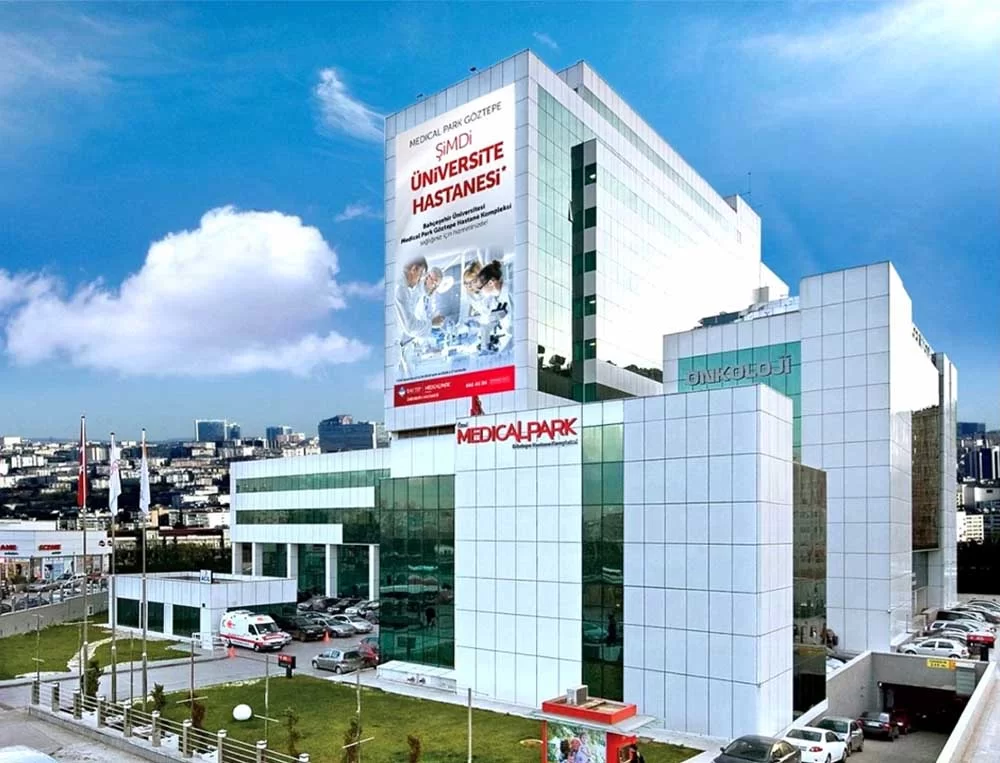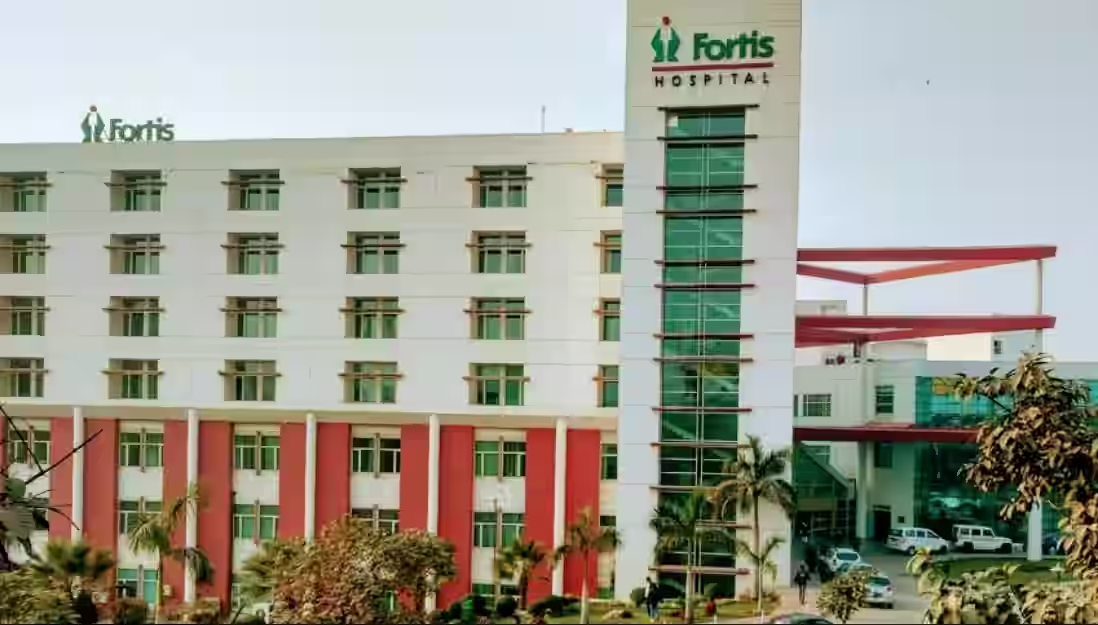Urology
Percutaneous Nephrolithotomy
Percutaneous Nephrolithotomy
Percutaneous nephrolithotomy in India offers safe, minimally invasive kidney stone removal with expert urologists, modern facilities, and affordable care for international patients.
Percutaneous Nephrolithotomy (PCNL) is a less invasive surgery that is applied to remove large or complicated kidney stones, which cannot be effectively treated with the other interventions such as medication, Extracorporeal Shock Wave Lithotripsy (ESWL), or Ureteroscopy.
Key Points:
- Procedure: The patient has a minor laceration done in the back- about 1 cm and directly over the kidney.
- Access: This incision is entered with the assistance of a thin tube (nephroscope) into the kidney.
- Stone Removal: It entails the breaking of the kidney stones with specialized tools or lasers followed by extraction of the stones.
- Drainage: Sometimes a nephrostomy tube or stent is temporarily left in position to drain urine to aid healing.
Indications:
PCNL is most commonly advised in case of:
- Kidney stones larger than 2 cm
- Staghhorn calculi (stones in the branches and renal pelvis)
- Refractory stones.
- Multiple or complex stones
Advantages:
- Better clearance rate of the stones than the non-invasive techniques.
- Less invasive than open surgery.
- Faster recovery period than open procedures.
Percutaneous Nephrolithotomy Surgery
Percutaneous Nephrolithotomy (PCNL) surgery is a less invasive operation carried out to eliminate the large, complicated, or stubborn kidney stones. It is the procedure whereby the back is cut into a small opening to reach the kidney and remove or disintegrate stones.
PCNL Surgery Procedure
- Anaesthesia - This patient receives general anaesthesia or regional.
- Positioning -The patient rests in face down (prone position).
- Kidney Access - A small (approximately 1 cm) incision is achieved on the back and a needle is inserted into the kidney with the help of ultrasound or X-ray imaging.
- Insertion of nephroscope - A nephroscope (one with a camera and a thin tube) is inserted into the kidney.
Stone Removal –
- The ultrasound, laser or pneumatic devices are used to break the stones.
- Suction or forceps are used in removing small fragments.
- Drainage Tube/Stent: A nephrostomy tube or ureteral stent can be inserted to allow the healing to drain well.
Percutaneous Nephrolithotomy Success Rate
Percutaneous Nephrolithotomy (PCNL) is thought to be one of the most effective modalities in the treatment of large or complex kidney stones. It is generally successful based on the rate of stone-free post-surgical.
Overall Success Rate
- 80 to 95 percent of large stone-free rates with one PCNL.
- Extra operations (e.g. ESWL or second-look PCNL) might be necessary in certain instances to clear all stones.
Percutaneous Nephrolithotomy Procedure
The Percutaneous Nephrolithotomy (PCNL) Procedure is broken down into the following stages in more detail:
Preparation
- Day prior to surgery: Hospital admission.
- Investigations: Blood tests, urine culture and imaging (CT scan/ultrasound) to identify the size and location of the stones.
- Antibiotics: Provided there is presence of any urinary infection.
- Anaesthesia: PCNL is done with the help of general anesthesia (patient is fully asleep).
Positioning
- The patient is typically put in a prone position (lying on his back).
- A modified supine position is sometimes applied based on the choice of the surgeon.
Gaining Kidney Access
- In the skin of the back a very small (approximately 1 cm) incision is taken.
- The needle is inserted into the kidney by ultrasound or x-ray (fluoroscopy).
- A guide wire is inserted into the kidney making a safe track.
Dilating the Tract
- The tract (path) is narrowed down, instrument by instrument, until the instruments pass through it.
- It is through this tract that a thin tube in the form of a nephroscope (thin tube with a camera) is inserted into the kidney.
Stone Removal
- The nephroscope is used when the surgeon is viewing the stones.
Stones are either:
- Incised with a laser, pneumatic or ultrasonic instrument.
- Aspirated with the aid of a suction tube or forceps.
Placement of Drainage
- To aid the recovery, a nephrostomy tube (temporary tube leaving through the back) or ureteral stent can be inserted to drain urine.
- In other instances, a tubeless PCNL (without a nephrostomy tube) is carried out in case of minimal blood loss and total clearance.
Completion
- Small dressing is used to close the incision.
- The process is usually within 13 hours (1-3), according to the size and complexity of the stones.
Post-Procedure Care
- Hospital stay: 2–4 days.
- Catheter: This tends to be taken out in 24-48 hours.
- Pain management and hydration: To ensure that the wound is healed and infection is avoided.
- Follow-up imaging: To establish stone clearance.
Percutaneous Nephrolithotomy Recovery Time
Here is a clear breakdown of the recovery time of Percutaneous Nephrolithotomy (PCNL):
Hospital Stay
- The average hospital stay of PCNL patients is 2-4 days.
- Time varies according to the size of stones, their complexity, and complications (such as infected or bleeding).
First Few Days/Immediate Recovery
- Catheter/nephrostomy tube: This is normally retained between 1-2 days to assist in the drainage of the urine.
- Symptoms: The common symptoms include mild flank pain, soreness of incision site, and blood in the urine (hematuria) on 13 days.
- Activity: Light exercise is recommended, however, no heavy lifting.
Short-Term Recovery (1–2 Weeks)
- Majority of the patients are capable of resuming normal day-to-day activities in 7-14 days.
- The internal stent, when put in, can bring some slight inconvenience or urinary urgency, until removed.
Full Recovery
- Full recovery of the kidney and access tract: normally in 2-4 weeks.
Return to work:
- Desk jobs → 1–2 weeks.
- Physically intensive work → 3-4 weeks.
Follow-Up
- After a couple of weeks, imaging (X-ray, CT, or ultrasound) is performed to ensure the kidney is stone free.
- A stent (where fitted) is commonly removed in 1- 2 weeks.
Factors Affecting Percutaneous Nephrolithotomy Cost
The following is a breakdown of the Factors Affecting Percutaneous Nephrolithotomy (PCNL) Cost:
Hospital and Location
- Hospital type Multispecialty hospitals and internationally accredited centers generally are more expensive than smaller clinics.
- Geographic location: Prices are quite diverse depending on the city or country (hospitals located in urban metro are more expensive).
Surgeon’s Expertise
- Urologists that are highly qualified and properly trained in endourology may want to charge above average fees.
- The cost can be raised by the complex cases that need senior specialists.
Type and Size of Stone
- Stone size: Calculi that are larger or staghorn may require increased instruments, extended surgery, and even more than one surgery.
- Stone complexity: Stone complexity increases the time and cost of procedures by being irregular, multiple, or hard to reach.
Type of Procedure
- Standard PCNL vs. Mini-PCNL (smaller track, less invasive) vs. Ultra-mini PCNL.
- The use of Tubeless PCNL (no drainage tube) can decrease the cost and length of stay in hospitals.
Anaesthesia Charges
- General anaesthesia is generally necessary and increases total cost.
- The length of anaesthesia is determined by the complexity of a surgical procedure.
Hospital Stay
- Average stay: 2–4 days.
- Increased cost is caused by longer stay because of complications (bleeding, infection, second operation).
Assigned Equipment and Technology
- It is more expensive when using advanced tools such as laser lithotripters, ultrasonic devices or high-definition imaging.
- There are also disposable instruments and nephrostomy tubes that increase the costs.
Pre- and Post-Surgery Tests
- Blood, urine testing, imaging (X-ray, CT, ultrasound), and ECG.
- Postoperative imaging to ensure clearance of the stones.
Drugs and Surgical Attention
- Antibiotics, paincontrol, and intravenous fluids in hospitalization.
- The cost is increased by the post-surgery process of stent removal or follows up.
Best Hospital for Percutaneous Nephrolithotomy
- Artemis Hospital, Gurgaon
- Medanta-The Medicity, Gurgaon
- Fortis Memorial Research Institute, Gurgaon
- Max Hospital, Saket
Conclusion
Percutaneous Nephrolithotomy (PCNL) is a safe, effective and minimally invasive surgery to remove large, complex or resistant kidney stones. It has a high success rate (80-95 percent), shorter recovery time than open surgery, and is the gold standard in treating stones above 2 cm and staghorn calculi. Although the procedure is very much effective, the overall outcome, recovery and cost depends on the stone size, location, the condition of the patient, the expertise of the surgeon, and hospital facilities. Under appropriate medical treatment, majority of the patients will be able to resume normal lives within 1-2 weeks, and have lasting relief against the kidney stones.
Why Choose GetWellGo for Percutaneous Nephrolithotomy Treatment?
GetWellGo is regarded as a leading supplier of healthcare services. We help our foreign clients choose the best treatment locations that suit their needs both financially and medically.
We offer:
- Complete transparency
- Fair costs.
- 24 hour availability.
- Medical E-visas
- Online consultation from recognized Indian experts.
- Assistance in selecting India's top hospitals for Percutaneous Nephrolithotomy treatment.
- Expert nephrologists with a strong track record of success
- Assistance during and after the course of treatment.
- Language Support
- Travel and Accommodation Services
- Case manager assigned to every patient to provide seamless support in and out of the hospital like appointment booking
- Local SIM Cards
- Currency Exchange
- Arranging Patient’s local food
FAQ
Is PCNL painful?
- Because the procedure is performed under general anaesthesia, the patients do not experience any pain. Soreness and mild back pain in the area of incision can follow but is treatable with medication.
Is possible that kidney stones can recur after PCNL?
- Yes, stones may repeat according to diet, hydration, and ailments. Follow-up and preventive measures are significant.
Is PCNL superior to ESWL or ureteroscopy?
- ESWL is superior in smaller stones (less than 1.5- 2 cm).
- You can get ureteroscopy to work with ureteral stones or smaller kidney stones.
- Large or complex stones (>2 cm) are best treated with PCNL.
TREATMENT-RELATED QUESTIONS
GetWellGo will provide you end-to-end guidance and assistance and that will include finding relevant and the best doctors for you in India.
A relationship manager from GetWellGo will be assigned to you who will prepare your case, share with multiple doctors and hospitals and get back to you with a treatment plan, cost of treatment and other useful information. The relationship manager will take care of all details related to your visit and successful return & recovery.
Yes, if you wish GetWellGo can assist you in getting your appointments fixed with multiple doctors and hospitals, which will assist you in getting the second opinion and will help you in cost comparison as well.
Yes, our professional medical team will help you in getting the estimated cost for the treatment. The cost as you may be aware depends on the medical condition, the choice of treatment, the type of room opted for etc. All your medical history and essential treatment details would be analyzed by the team of experts in the hospitals. They will also provide you with the various types of rooms/accommodation packages available and you have to make the selection. Charges are likely to vary by the type of room you take.
You have to check with your health insurance provider for the details.
The price that you get from GetWellGo is directly from the hospital, it is also discounted and lowest possible in most cases. We help you in getting the best price possible.
No, we don't charge patients for any service or convenience fee. All healthcare services GetWellGo provide are free of cost.
Top Doctors for Urology
Top Hospitals for Urology
Contact Us Now!
Fill the form below to get in touch with our experts.







